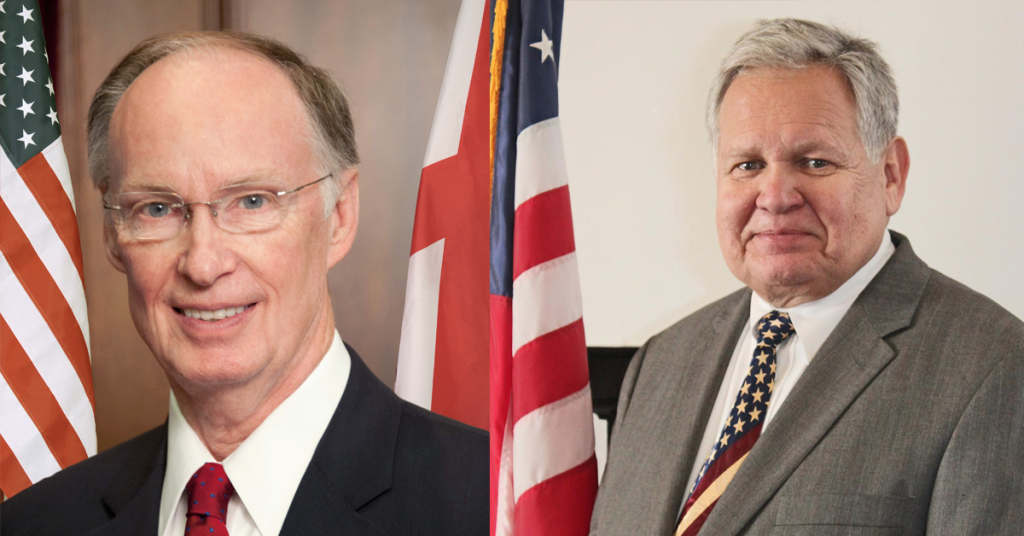U.S. troops surge evacuations out of Kabul but threats persist

The U.S. military reported its biggest day of evacuation flights out of Afghanistan by far on Monday, but deadly violence that has blocked many desperate evacuees from entering Kabul’s airport persisted, and the Taliban signaled they might soon seek to shut down the airlifts. Twenty-eight U.S. military flights ferried about 10,400 people to safety out of Taliban-held Afghanistan over 24 hours that ended early Monday morning, and 15 C-17 flights over the next 12 hours brought out another 6,660, White House officials said. The chief Pentagon spokesman, John Kirby, said the faster pace of evacuation was due in part to coordination with Taliban commanders on getting evacuees into the airport. “Thus far, and going forward, it does require constant coordination and deconfliction with the Taliban,” Kirby said. “What we’ve seen is, this deconfliction has worked well in terms of allowing access and flow as well as reducing the overall size of the crowds just outside the airport.” With access still difficult, the U.S. military went beyond the airport to carry out another helicopter retrieval of Americans. U.S. officials said a military helicopter picked up 16 American citizens Monday and brought them onto the airfield for evacuation. This was at least the second such rescue mission beyond the airport; Kirby said that last Thursday, three Army helicopters picked up 169 Americans near a hotel just beyond the airport gate and flew them onto the airfield. President Joe Biden’s national security adviser, Jake Sullivan, said at the White House that talks with the Taliban are continuing as the administration looks for additional ways to safely move more Americans and others into the Kabul airport. “We are in talks with the Taliban on a daily basis through both political and security channels,” he said, adding that ultimately it will be Biden’s decision alone whether to continue military-led evacuation operations beyond Aug. 31. In a reminder of the urgency felt amid a dizzying array of security threats to the evacuation effort, the Pentagon posted a video of a laser near the airport targeting a U.S. Air Force C-17 aircraft and apparently attempting to disrupt the pilot during landing. After more than a week of evacuations plagued by major obstacles, including Taliban forces and crushing crowds that are making approaching the airport difficult and dangerous, the number of people flown out met — and exceeded — U.S. projections for the first time. The count was more than twice the 3,900 flown out in the previous 24 hours on U.S. military planes. Army Gen. Stephen Lyons, head of U.S. Transportation Command, which manages the military aircraft that are executing the Kabul airlift, told a Pentagon news conference that more than 200 planes are involved, including aerial refueling planes, and that arriving planes are spending less than an hour on the tarmac at Kabul before loading and taking off. He said the nonstop mission is taking a toll on aircrews. “They’re tired,” Lyons said of the crews. “They’re probably exhausted in some cases.” On a more positive note, Lyons said that in addition to the widely reported case of an Afghan woman giving birth aboard a U.S. evacuation aircraft, two other babies have been born in similar circumstances. He did not provide details. The Pentagon said it has added a fourth U.S. military base, in New Jersey, to three others — in Virginia, Texas, and Wisconsin — that are prepared to temporarily house arriving Afghans. Maj. Gen. Hank Williams, the Joint Staff deputy director for regional operations, told reporters there are now about 1,200 Afghans at those military bases. The four bases combined are capable of housing up to 25,000 evacuees, Kirby said. Afghan evacuees continued to arrive at Dulles International Airport outside of Washington. A bus carried some of the latest arrivals from Dulles airport to another site for what would be one of many processing stops before they reach new homes in the United States. Exhaustion clouded the faces of many of the adults. How does it feel to be here, a journalist asked one man. “We are safe,” he answered. An older woman sank with relief into an offered wheelchair, and a little girl carried by an older boy shaded her eyes to look curiously around. It was an interim stop for what had been a grueling struggle over days for many to get flights out of what is now Taliban-ruled Afghanistan. The scramble to evacuate left many arrivals carrying only a book bag or purse or a plastic shopping bag of belongings. Some arrived for their new lives entirely empty-handed. Biden said Sunday he would not rule out extending the evacuation beyond Aug. 31, the date he had set for completing the withdrawal of troops. And British Prime Minister Boris Johnson plans to press Biden for an extension to get out the maximum number of foreigners and Afghan allies possible. Biden is to face the U.S.’s G-7 allies in a virtual summit on Afghanistan Tuesday. Taliban spokesman Suhail Shaheen, in an interview with Sky News, said that Aug. 31 is a “red line” the U.S. must not cross and that extending the American presence would “provoke a reaction.” Since the Taliban seized the capital on August 15, completing a stunning rout of the U.S.-backed Afghan government and military, the U.S. has been carrying out the evacuation in coordination with the Taliban, who have held off on attacking under a 2020 withdrawal deal with the Trump administration. Monday’s warning signaled the Taliban could insist on shutting down the airlifts out of the Kabul airport in just over a week. Lawmakers, refugee groups, veterans’ organizations, and U.S. allies have said ending the evacuation then could strand countless Afghans and foreigners still hoping for flights out. Since August 14, the U.S. has evacuated and facilitated the evacuation of about 37,000 people. A firefight just outside the airport killed at least one Afghan soldier early Monday, German officials said. It was the latest in days of often-lethal turmoil outside the airport. People coming in hopes of escaping Taliban
Lynching memorial may be game-changer for Montgomery tourism

A memorial to the victims of racial lynchings and a new museum in Montgomery, Alabama, have gotten a lot of attention since opening in late April. Some 10,000 people visited the memorial and museum in the first week. Tourism officials estimate they could attract 100,000 more visitors to this Southern city in the next year. One young man, Dimitri Digbeu Jr., who drove 13 hours from Baltimore to see the memorial, said he thought it had singlehandedly “rebranded” Montgomery. But tourism challenges exist. Few direct flights serve Montgomery, and it’s a three-hour drive from Atlanta. “How do we get people to come here and make the pilgrimage here?” said filmmaker Ava DuVernay at a conference marking the memorial launch. “We have to be evangelists to go out and say what you saw here and what you experienced here. … Don’t just leave feeling, ‘That was amazing. I cried.’” DuVernay, whose Oscar-nominated movie “Selma” described the 1965 civil rights march from Selma, Alabama, to Montgomery, noted that the memorial and museum were built by legal advocacy group the Equal Justice Initiative. “These people are lawyers fighting for people on death row,” DuVernay added. “They’re not thinking about how to market this to the wider world.” Some travelers say the new memorial and museum have changed their minds about visiting the Deep South. “As a black American, I’m not crazy about the idea of driving down streets named after Confederate generals and averting my eyes from Confederate flags,” said New Yorker Brian Major. “But reconciliation and peace-making has to begin somewhere and for a project as worthy and important as the lynching memorial, I would be willing to make the trip.” DuVernay put it this way: “This has to be a place where every American who believes in justice and dignity must come.” For those who do visit, here’s a guide. Lynching Memorial and Legacy Museum The National Memorial for Peace and Justice honors more than 4,000 individuals who were lynched between 1877 and 1950. Their names are inscribed on 800 steel columns, one for every U.S. county where lynchings happened. Most counties are in the South, but there are also markers for lynchings in states like Minnesota and New York. The markers begin at eye level, then gradually move overhead, evoking the specter of hanging bodies. Some of the killings are described in detail: Victims were lynched for asking for a glass of water, for voting, for testifying against a white man. The new museum, which is called The Legacy Museum: From Enslavement to Mass Incarceration, explores slavery and segregation in horrific detail and argues that when segregation ended, mass incarceration began. The museum cites statistics showing 300,000 people were in prison in 1971 compared with 2.3 million today, and that one in three black boys will be jailed in the 21st century if trends continue. Exhibits offer details of innocent men on death row and children imprisoned in adult facilities where they were brutalized. Montgomery resident Shawna Brannon volunteered at the opening and said visitors of all races wept and shook their heads in dismay. “Once you go through, you will never be the same,” she said. Slavery and Civil Rights The Legacy Museum is located on the site of a warehouse where thousands of enslaved people were held before being sold at auction nearby. When the Civil War began, Montgomery was the Confederacy’s first capitol. Montgomery’s Rosa Parks Museum marks the spot where a black seamstress was arrested for refusing to surrender her seat on a bus to a white passenger. That sparked a bus boycott by African-Americans that ended when the U.S. Supreme Court declared segregation on public buses unconstitutional. The bus boycott also turned a young minister named Martin Luther King Jr. into a leader of the civil rights movement. That story is told at Montgomery’s Dexter Parsonage Museum , where King and his family lived when he was pastor of the Dexter Avenue Baptist Church. The parsonage porch still bears a crevice where a bomb landed (no one was hurt). Outside the Kings’ bedroom is a telephone that rang all night with threatening phone calls. The Freedom Rides Museum honors black and white students who rode Greyhound buses together to challenge segregation. A white mob attacked them when they arrived in Montgomery while police did nothing. That spurred the Kennedy Administration to send in federal marshals. Michelle Browder’s More Than Tours offers a wonderful bus tour that tells many of these stories and also shows off Montgomery’s resurgent downtown, including the restored Kress Building, now home to an art gallery and cafe. Etcetera For inexpensive, hearty lunches featuring fried chicken, turnip greens, catfish, okra and ribs, head to Davis Cafe, Farmers Market Cafe and Derk’s Filet & Vine. For a wonderful fancy dinner, try Vintage Year. Cahawba House and Shashy’s serve up great breakfasts. The Tucker Pecan store sells butter pecan ice cream and souvenir bags of pecans. Fans of country music legend Hank Williams should visit his impressive gravesite at Montgomery’s Oakwood Annex Cemetery. Downtown, the Hank Williams Museum displays the Cadillac he was riding in when he died at age 29.Montgomery’s Old Cloverdale neighborhood is home to the F. Scott and Zelda Fitzgerald Museum. The “Great Gatsby” writer and his wife lived here in the 1930s, and you can even rent an Airbnb apartment upstairs, complete with record player and jazz albums. Republished with the permission of the Associate Press.
Jim Zeigler slams Robert Bentley, calls for “executive recall” mechanism to oust Governor

State Auditor Jim Zeigler is an old foe of Gov. Robert Bentley. Now that the governor is now embattled over accusations of inappropriate behavior towards a former staffer – and widespread opposition from members of his own Republican Party – Zeigler made remarks over the weekend indicating he does not intend to ease off now. Zeigler spoke to supporters of the so-called Common Sense Campaign, a conservative political group, in the town of Theodore over the weekend, away from the scourge of “Sodom and Montgomery.” There, he excoriated the governor for what he called — appropriating the famous Hank Williams song — “His Cheatin’ Heart.” “When tears come down like fallin’ rain / You’ll toss around and call her name,” recited Zeigler in a bawdy send-up of Zeigler. “But she won’t come the whole night through / because her cushy job is through.” Zeigler served up invective against both Zeigler and the lawmakers who have made little progress in fledgling efforts to impeach him. Calling his summary of the matter a “Lack of Progress Report,” Zeigler noted a bill to begin impeachment proceedings filed by Rep. Ed Henry has not been taken up in committee and stands little chance of passing before the Legislature adjourns by May 16. Zeigler said that means no legislative impeachment process could take effect until 2017 at the earliest. “The people of Alabama want and need a solution to the serious problems in the governor’s office soon, not in 2017,” said Zeigler. “To allow the dysfunction… to linger until 2017 is not acceptable.” Towards that end, Zeigler proposed legislative to create what he dubbed an “executive recall.” The bill, which he said was more likely to pass than existing mechanisms, would: Propose a constitutional amendment establishing a recall process for all seven members of the Cabinet, including the offices of governor and state auditor, to be voted on in November 2016; Provide that a petition by 10 percent of registered voters may trigger such a process; and If recalled, a special election to replace the governor would be held within 120 days. The process would avoid the usual order of succession should a governor step down, whereby an existing officer would take their place because that way, “The people remain in control, not Montgomery politicians.”


